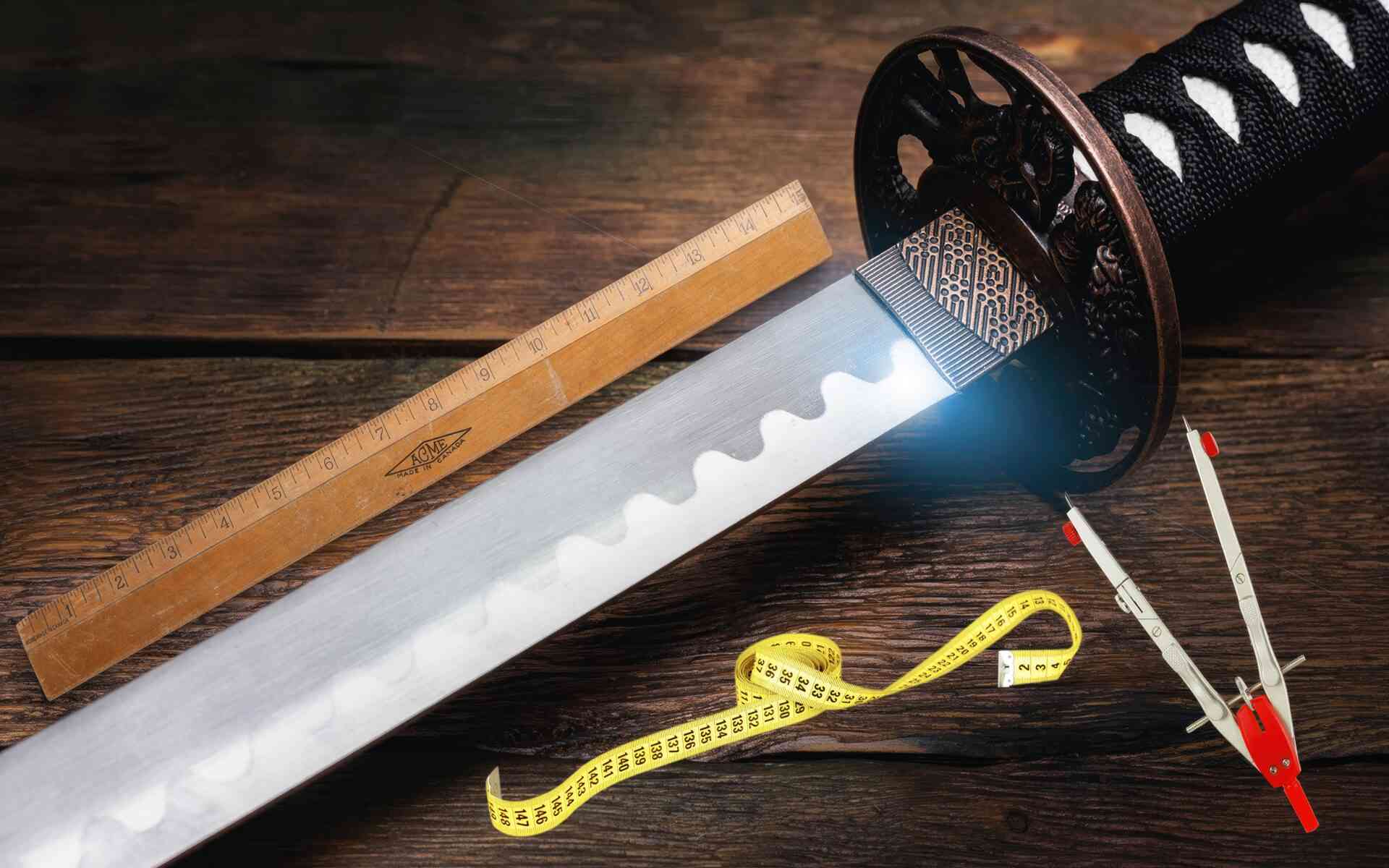
More than a sword, the katana is a tapestry of Japanese history, artistry, and philosophy. Its elegant design and sharpness captivate people all over the world-from martial artists to collectors and historians. This article will cover the origin of the katana, its distinctive features, the meticulous craftsmanship in creating the katana, and its enduring significance in modern culture.
Origins of the Katana Sword
Origins of the katana sword go back to feudal Japan during the Kamakura period of 1185–1333. As warfare continued and styles of combat changed, samurai warriors required a quick-drawing sword that was effective when used in close quarters. The design of the katana sword was for this type of need with its curved blade allowing it to swiftly slash.
Sword Development
Initially, Japanese swords were straight and double-edged. However, as battles became more active and fast-paced in pace, the katana was formed from a weapon, which would become way more practical. By the 14th century, the samurai class of warriors would utilize this weapon almost exclusively, made it representative of their station and their commitment to their code of honor.
With time, the katana transcended its existence as merely a tool of war; it became an emblem of loyalty, discipline, and the spirit of the way of the warrior in culture. Every owner considered the katana to be an extension of his soul.
Unique Features of the Katana Sword
- Understanding the katana sword: A historical, and cultural Journey
- GambleAware organization calls for active fight against gambling advertising
Keep Reading
Characteristics of the Blade
The katana blade is long and curved. Generally, it is between 24 to 30 inches long. It has only one edge. Thus, its design favors slicing than thrusting. Its edge will cut deep without necessarily straining. It can draw quickly from the scabbard due to the curves.
Materials Used in Its Making
Traditional katana are made from a type of steel specifically called tamahagane. The smelting process is somewhat unique: several folds and hammering of the metal in the process remove impurities. Folding not only strengthens the steel but also creates beautiful patterns on the blade called hamon, which indicate the tempering processes.
Important Parts of a Katana Sword
A typical katana comprises of the following important parts:
- Nagasa: The cutting blade.
- Tsuka: The hilt or handle, usually wrapped with silk or cotton for better grip.
- Tsuba: The guard that protects the hands during use.
- Saya: The scabbard that houses the blade when not in use.
- Kashira: The pommel at the end of the hilt that provides balance.
Craftsmanship and Artistry
The art of creating a katana is highly skilled and dedicated. Master swordsmiths use techniques passed down through generations. The stages involved in the process are as follows:
- Forging: Heating and hammering steel into shape.
- Folding: Repeatedly folding the metal to enhance strength and remove impurities.
- Quenching: Heating again and then rapidly cooling to harden the blade.
- Polishing: Meticulous polishing to achieve sharpness and aesthetic appeal.
Selecting Your Ideal Katana Sword
When choosing a katana, consider the specific requirements and preferences for it:
Purpose of Use
Identify why you would want to have a katana: whether it's for martial arts practice, for display purposes, or just as a collection. This will help guide the selection process.
For Martial Arts: Functional swords made from materials that can withstand rigorous training.
For Display: Decorative katanas with intricate designs or historical significance.
Quality Considerations
High-quality investment in katana. Katanas are traditionally mostly made by the best of artisans.
Buy from good sellers, which describes what they're selling
Customization Available
You can actually find quite a number of manufacturers offering customization options. Some options include; unique features, such as tsuba design, or you may want your tsuka to have a special color to suit your tastes.
Budget Planning
Katanas vary in price. Determine your budget before shopping to help you narrow down your options.
Value vs. Cost: More-expensive katanas often indicate better craftsmanship but make sure you find one within your budget that suits your needs and meets them.
Caring for Your Katana Sword
The Proper Care of Your Katana Shall Keep Her Beautiful and Functioning at Optimal Levels:
Regular Cleaning Routine
Clean your sword regularly: You should wipe the weapon clean with a soft fabric after every use, this is to remove the moisture and dust from it preventing the rust from settling there.
Oil Application
Clean blades have a thin layer of sword oil applied on it because these oils prevent rust; the oils can be highly specialized for the application since different swords have varying metals.
Safe Storage Processes
Store your katana in a scabbard when idle and keep in a dry condition, shielded from both direct sun and moisture.
Periodical Checks
Review your katana for potential damage every now and then. Observe any flaw and do something about it to have it in fine condition always.
Cultural Significance of the Katana Sword
The katana has rich cultural significance and is more than just a useful tool as a weapon:
Icon of honor and discipline.
For samurai warriors, honor, loyalty, and strength were the qualities which one katana symbolized-they thought of this kind of sword as a material extension of their spirits-for battle but also as embodying what they would regard as being a personal good.
Artistic Value
Workmanship for making katanas takes it up the level to an artwork form. In fact, in many ways, collecting them is also a part of aesthetic pleasure besides using this sword in actual fight condition.
Modern Influence
The katanas today influence almost every other aspect of pop culture, from films like "Crouching Tiger, Hidden Dragon" to video games like "Nioh." They continue to fascinate people all over the world with their beauty and cultural heritage.
Conclusion
The katana sword, therefore, is more than a sword; it is a long-standing tradition, an art, and a characteristic of a culture. Further appreciation can only come from knowledge of its history, unique features, craftsmanship, and proper care. Thus, whether you are a collector seeking authenticity or a martial artist requiring functionality, the selection process can be a rewarding experience.
Contingent on your purposes, the quality and availability of options for customization, your budget restraints, as well as a seller with whom you do business of excellent repute when purchasing your katana, you can be confident that you would be doing so in the best, most suitable sense available to your needs. Treating with proper care and reverence will serve to make the katana something treasured by you as history and artistry in the many years ahead!










